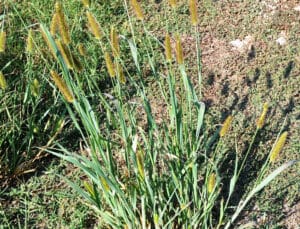Ilex crenata ‘Soft Touch’
Description
Rising in popularity due to its manageable size and soft, flexible foliage, our Soft Touch Holly boasts classic benefits with a fresh twist. No more worries about being pricked by holly leaves in your backyard!
Plus, it’s the epitome of effortless elegance. Small, glossy leaves are accented by tiny flowers in the spring and black-hued berries in the fall and winter, attracting graceful wildlife while resisting common pests and diseases, adapting to drought and acclimating to nearly any soil type.
Even better? A mature height of just 3 feet makes it an ideal selection for gardeners with limited space and particularly well-suited to border or foundation planting. Its uniform, rounded habit is perfect for a polished yet hassle-free landscape.
Planting
First, select a location with well-drained soil and full to partial sunlight (about 4 to 8 hours of sun per day). Then, dig a hole twice the diameter of the root ball and just as deep. Moisten the hole with water, place the plant’s roots into the hole, back full and tamp the soil firmly down around the roots to remove any air pockets.
Watering
Keep the plant moist for the first year of growth to help the plant establish roots. Generally, you should water the plant at least once per week, especially during periods of drought for optimum growth. After the first year, you should only need to water in times of extended drought.
Fertilizing
Fertilize the Soft Touch Holly in the early spring or fall using a general-purpose fertilizer. Follow the instructions on the fertilizer’s label for ratio requirements.
Pruning
Prune your shrub in fall or winter and remove any broken or dead branches. The Soft Touch spreads through root suckers, so to control growth, the suckers should be pruned.
Pollination
you will need both to produce berries on the female plant. However, hollies are hard to tell apart when they are not fruiting, and we can’t guarantee whether you will receive a male or female. For best results, we suggest planting in groups to enjoy berries on the female plants and lush greenery on both year-round.
| Growing Information | |
| Mature Height: | 2-3 ft |
| Mature Width: | 2-3 ft |
| Sunlight: | Full to Partial Sun |
| Bloom Time: | |
| Growth Rate: | Moderate |
| Grows Well in Zones: | 5-9 |
| Your Growing Zone: | 6 |





